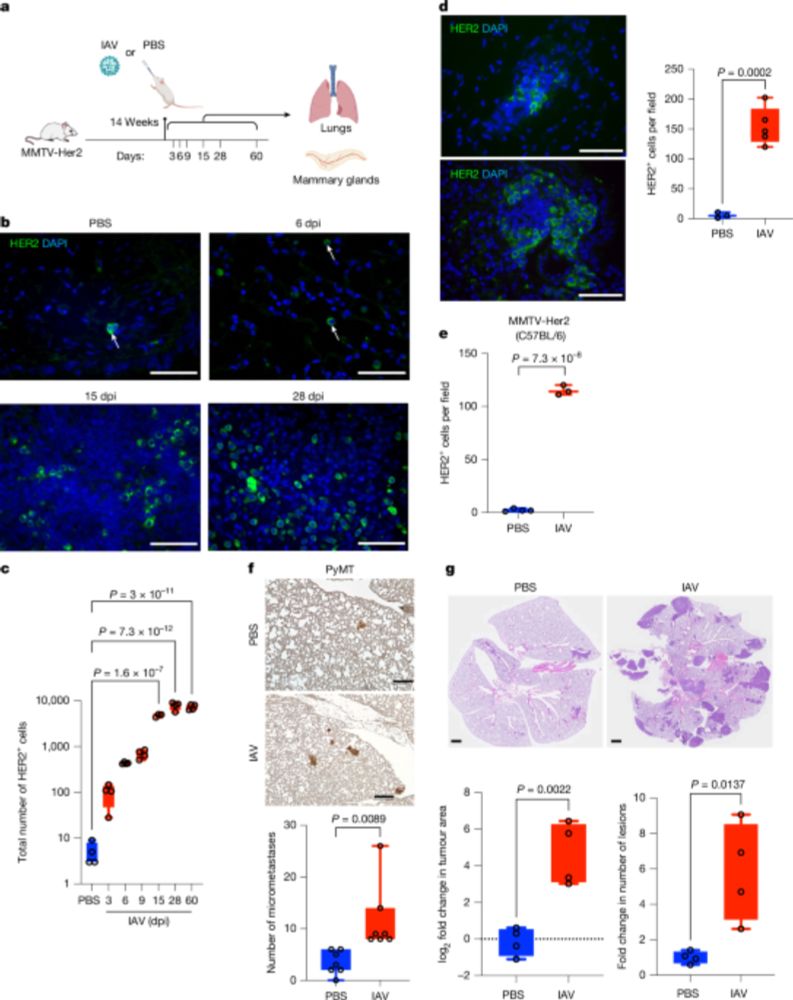
co-organized by @christinebeck.bsky.social and Mark Adams @jacksonlab.bsky.social Register www.jax.org/longread
#RNA #genomics #bioinformatics #cancer #medicine #evolution #neuroscience

co-organized by @christinebeck.bsky.social and Mark Adams @jacksonlab.bsky.social Register www.jax.org/longread
#RNA #genomics #bioinformatics #cancer #medicine #evolution #neuroscience

Published today in Nature, the study suggests this could be a new way to stop breast cancer before it starts: urldefense.com/v3/__https:/...
Brilliant team science

Published today in Nature, the study suggests this could be a new way to stop breast cancer before it starts: urldefense.com/v3/__https:/...
Brilliant team science
"how age affects cells in the breast tumor microenvironment or how they contribute to age-related pathology."
www.nature.com/articles/s43...

"how age affects cells in the breast tumor microenvironment or how they contribute to age-related pathology."
www.nature.com/articles/s43...



New mRNA vaccines generate self-assembling nanoparticles to enhance immunity, dual-targeting "decoys" prevent metastasis and potentiate immunotherapy against melanoma in mice, and more. https://scim.ag/4n6wrKC

New mRNA vaccines generate self-assembling nanoparticles to enhance immunity, dual-targeting "decoys" prevent metastasis and potentiate immunotherapy against melanoma in mice, and more. https://scim.ag/4n6wrKC

🔗 crukcambridgecentre.org.uk/news/researc...

🔗 crukcambridgecentre.org.uk/news/researc...


Which seeds will turn into cures? Unpredictable looking forward, a straight line looking back. 🧪🧬 🧵

Which seeds will turn into cures? Unpredictable looking forward, a straight line looking back. 🧪🧬 🧵

📄 www.medrxiv.org/content/10.1...

📄 www.medrxiv.org/content/10.1...
A great collaboration with @kurianlab.bsky.social that began with how an RBP (QKI) controls cardiomyocyte function, and led to uncovering a unique mechanism of direct interaction with U6 & the tri-snRNP at weak 5'SS

A great collaboration with @kurianlab.bsky.social that began with how an RBP (QKI) controls cardiomyocyte function, and led to uncovering a unique mechanism of direct interaction with U6 & the tri-snRNP at weak 5'SS


Its structures regulate, evolve, and catalyze — carrying out functions DNA alone cannot.
But predicting #RNA structure from sequence is still extremely difficult.
In our recently published paper in @narjournal.bsky.social we present a way forward.
🧵 ⤵️

Its structures regulate, evolve, and catalyze — carrying out functions DNA alone cannot.
But predicting #RNA structure from sequence is still extremely difficult.
In our recently published paper in @narjournal.bsky.social we present a way forward.
🧵 ⤵️
www.science.org/doi/10.1126/...

www.science.org/doi/10.1126/...
Such a rewarding group effort led by Melissa Dolan, with Kendra Libby, Alison Ringle, and @vangalenlab.bsky.social
So grateful to @gabriellebrewer.bsky.social @natrevcancer.nature.com for her efforts and support
Such a rewarding group effort led by Melissa Dolan, with Kendra Libby, Alison Ringle, and @vangalenlab.bsky.social
So grateful to @gabriellebrewer.bsky.social @natrevcancer.nature.com for her efforts and support
aacrjournals.org/cancerdiscov...

aacrjournals.org/cancerdiscov...




